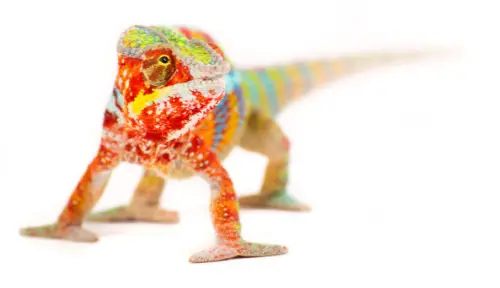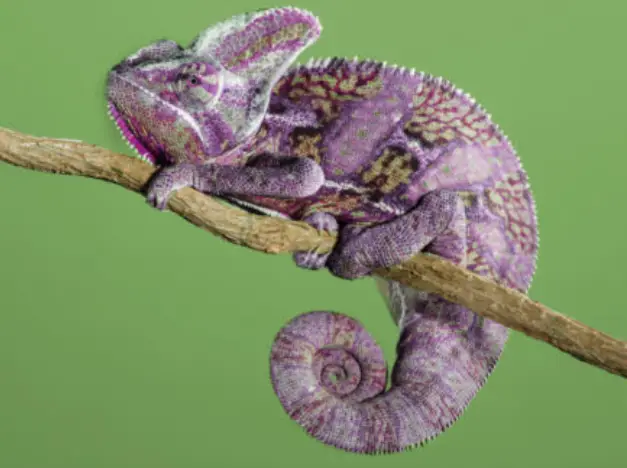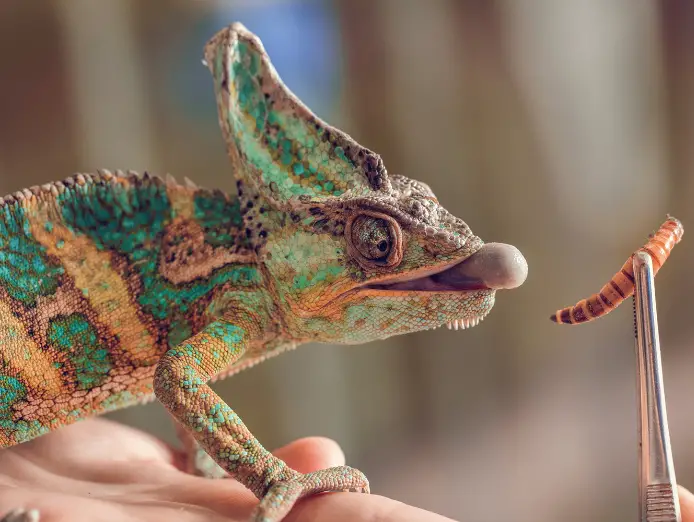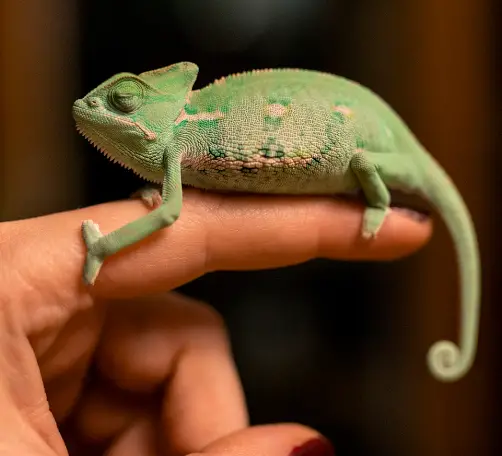Chameleons are often admired for their unique qualities, such as their ability to change color and their long, sticky tongues used to capture prey. However, one aspect of their biology that is often overlooked is their ability to molt. Like many other reptiles, chameleons shed the outer layer of their skin periodically. This process is crucial for their growth and health, as it allows for the renewal of old skin cells and the removal of harmful bacteria and parasites. In this article, we’ll explore the process by which chameleons molt, including the timing and frequency of their molts, how they prepare for molting, and the common challenges they face during the process.
When do chameleons molt?
The frequency of chameleon molting varies depending on the species and age of the animal. Young chameleons tend to molt more frequently than older ones because they are still growing and need to replace their skin more often. In general, chameleons will molt between every three to four weeks as hatchlings, once a month as juveniles, and every two to three months as adults.
The timing of a chameleon’s molt can also depend on various environmental factors, such as temperature, humidity, and light. For example, if a chameleon is kept in captivity in an environment that is too dry, it may delay molting until conditions improve.
What happens during chameleon molting?
The molting process begins when a chameleon’s skin starts to separate from the outer layer of the old skin. The chameleon will then slowly extract its limbs, tail, and head from the old skin, which will be shed in one whole piece. During this process, the chameleon’s vision can be temporarily impaired as the skin over its eyes becomes opaque.
After the molt is complete, the chameleon may spend some time basking in the sun to harden its new skin. The entire process can take anywhere from a few days to several weeks, depending on the size of the chameleon and the environmental conditions.
How do chameleons prepare for molting?
Before molting, a chameleon will usually show signs of lethargy, decreased appetite, and increased sleep. This is because the process of shedding its skin requires a lot of energy and can be stressful for the animal. To prepare for molting, chameleons will often drink more water than usual to hydrate their skin and will also spend more time basking in the sun to help activate enzymes and loosen the old skin.
What are the common challenges chameleons face during molting?
During molting, chameleons are vulnerable to a number of health risks, including dehydration, respiratory infections, and parasites. They may also be more prone to injury or infections around their eyes, which can become temporarily opaque during the molting process.
To minimize these risks, it’s important to provide chameleons with a clean, comfortable environment during the molting process. This can include misting their enclosure more frequently to maintain humidity levels, providing fresh water for drinking and soaking, and removing any old skin or debris from the enclosure.
How can you tell when a chameleon is about to molt?
The signs that a chameleon is about to molt can vary, but there are a few key indicators to look out for. Lethargy and decreased appetite are common signs, as well as an increased tendency to spend time basking or hiding. You may also notice that the chameleon’s skin looks dull or faded, which can be a sign that it is about to shed its old skin.
If you suspect that your chameleon is about to molt, it’s important to provide it with the necessary conditions to do so safely. This might include providing extra water for drinking and soaking, adjusting the temperature and humidity levels in the enclosure, and removing any sharp or potentially harmful objects from the environment.
How can you help your chameleon during the molting process?
The molting process can be stressful for your chameleon, so it’s important to take steps to ensure that it stays healthy and comfortable during this time. This might include providing extra water for hydration, maintaining a clean and humid environment, and providing supplemental lighting to help encourage healthy skin growth.
In some cases, it may be necessary to provide additional support or medical care, such as antibiotics or pain medication, if your chameleon is experiencing complications during the molting process. If you have any concerns or questions about your chameleon’s health during molting, it’s always best to consult with a veterinarian who specializes in reptile care.
Conclusion
In conclusion, the process of molting is an essential part of a chameleon’s biology. Although it can be a stressful and vulnerable time for the animal, with proper care and support from their owners, chameleons can safely shed their old skin and grow healthy new skin that allows them to continue thriving in their environment. By understanding the importance of molting and how to support your chameleon during this time, you can help ensure that your pet remains healthy and happy throughout their life.







